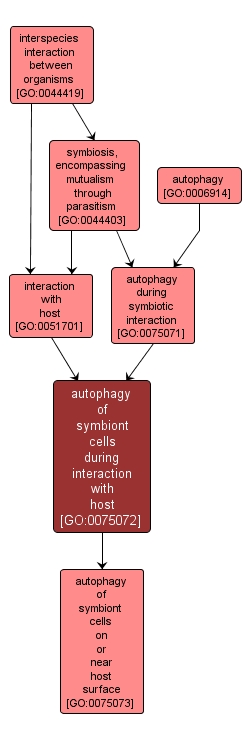GO TERM SUMMARY
|
| Name: |
autophagy of symbiont cells during interaction with host |
| Acc: |
GO:0075072 |
| Aspect: |
Biological Process |
| Desc: |
The process by which symbiont cells digest parts of their own cytoplasm during interaction with its host. The host is defined as the larger of the organisms involved in a symbiotic interaction. |
|

|
INTERACTIVE GO GRAPH
|














